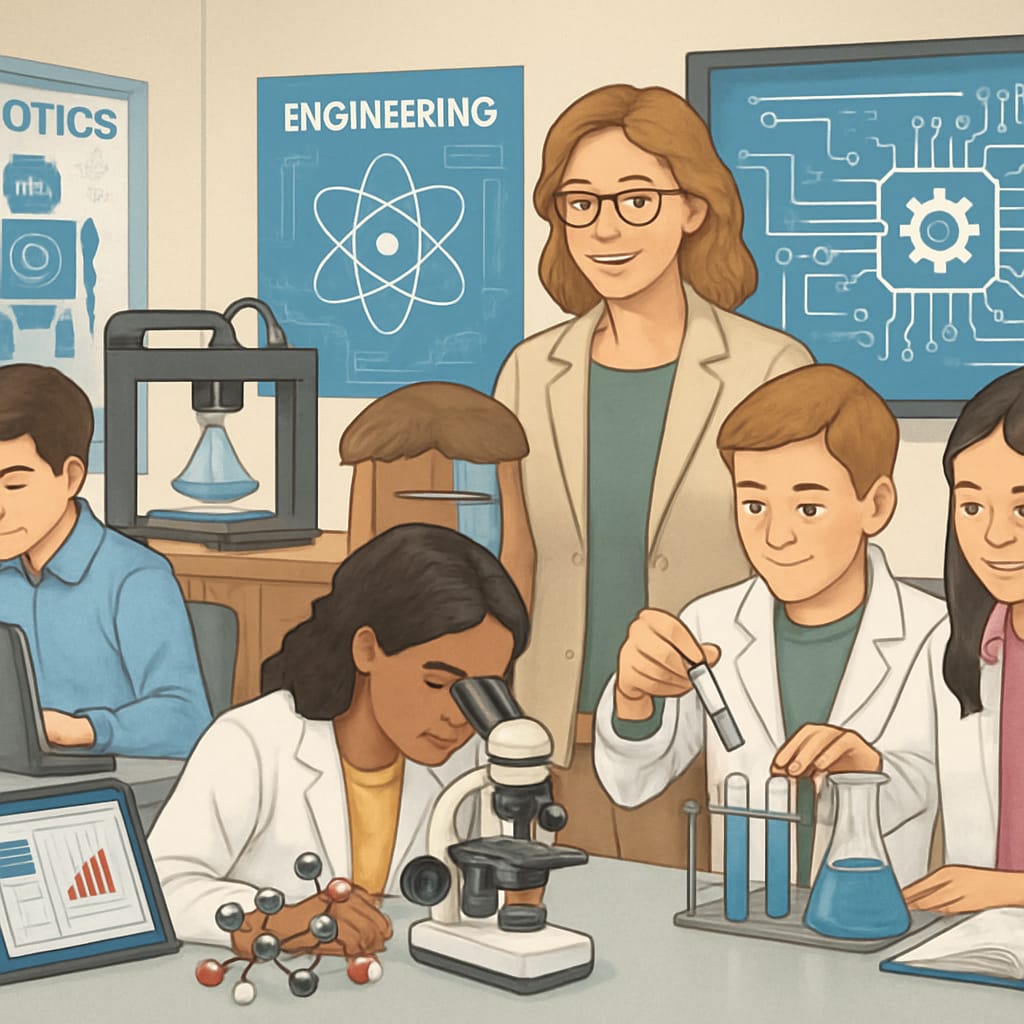The American high school curriculum is in urgent need of reform. The current system, burdened with extensive humanities requirements, often sidelines opportunities for STEM education, philosophy, rhetoric, and emotional intelligence (EI). This imbalance not only fails to address the demands of the modern workforce but also neglects essential life skills. By focusing on curriculum reform that emphasizes STEM education and streamlining the humanities, we can better prepare students for the challenges of the future.

The Need for Curriculum Reform in American High Schools
High schools in the United States follow a curriculum model that has remained largely unchanged for decades. While humanities subjects like history, literature, and social studies play a crucial role in developing critical thinking, their overemphasis often limits the time and resources available for STEM (Science, Technology, Engineering, and Mathematics) education. As a result, students miss opportunities to acquire the technical and analytical skills that are increasingly vital in today’s digital economy.
For example, according to a Britannica article on STEM education, careers in STEM fields are growing at nearly twice the rate of non-STEM fields. Yet, many schools struggle to offer adequate STEM-focused classes due to rigid curriculum structures. Addressing this gap is essential to ensure students are equipped for future industries.
Balancing STEM with Humanities: A Path Forward
To create a balanced and future-ready curriculum, the following steps can be considered:
- Streamline humanities courses: Condense overlapping topics in history and literature to free up time for STEM and other critical subjects.
- Integrate interdisciplinary learning: Combine humanities with STEM through project-based learning, such as analyzing historical data using statistical tools.
- Incorporate life skills education: Introduce courses in emotional intelligence, rhetoric, and philosophy to complement STEM and foster well-rounded development.
By reimagining the curriculum in this way, schools can maintain the cultural and ethical insights provided by the humanities while making room for STEM and other future-forward disciplines.

Why Prioritizing STEM Matters
The emphasis on STEM education is not just about preparing students for specific careers; it’s about equipping them with problem-solving skills, adaptability, and innovation. According to the Wikipedia page on the future of work, automation and artificial intelligence will redefine job markets across the globe. STEM education is critical for ensuring that the workforce of tomorrow can adapt to these rapid changes.
Moreover, STEM fields encourage creativity and teamwork, skills that transcend industries and are essential for personal and professional success. For example, collaborative robotics projects or coding challenges can teach students how to work effectively in teams while fostering innovation.
In addition, prioritizing STEM does not mean neglecting soft skills. On the contrary, integrating philosophy and emotional intelligence into STEM lessons can create a holistic learning experience where students are both technically adept and emotionally aware.
Conclusion: A Call for Thoughtful Reform
It is clear that the current American high school curriculum needs a shift. By prioritizing STEM education and streamlining humanities courses, schools can create room for subjects like philosophy, rhetoric, and emotional intelligence, which are equally important for future success. This balanced approach ensures that students not only meet the demands of the modern workforce but also develop as well-rounded individuals capable of critical thinking and creative problem-solving.
As education evolves to meet the challenges of tomorrow, thoughtful curriculum reform is essential. The time to act is now—students deserve an education system that prepares them for a dynamic and unpredictable future.
Readability guidance: This article uses short paragraphs, clear subheadings, and bullet points to enhance readability. Transitions like “for example,” “in addition,” and “as a result” are distributed throughout to ensure smooth flow. Passive voice and long sentences are minimized for better clarity.


